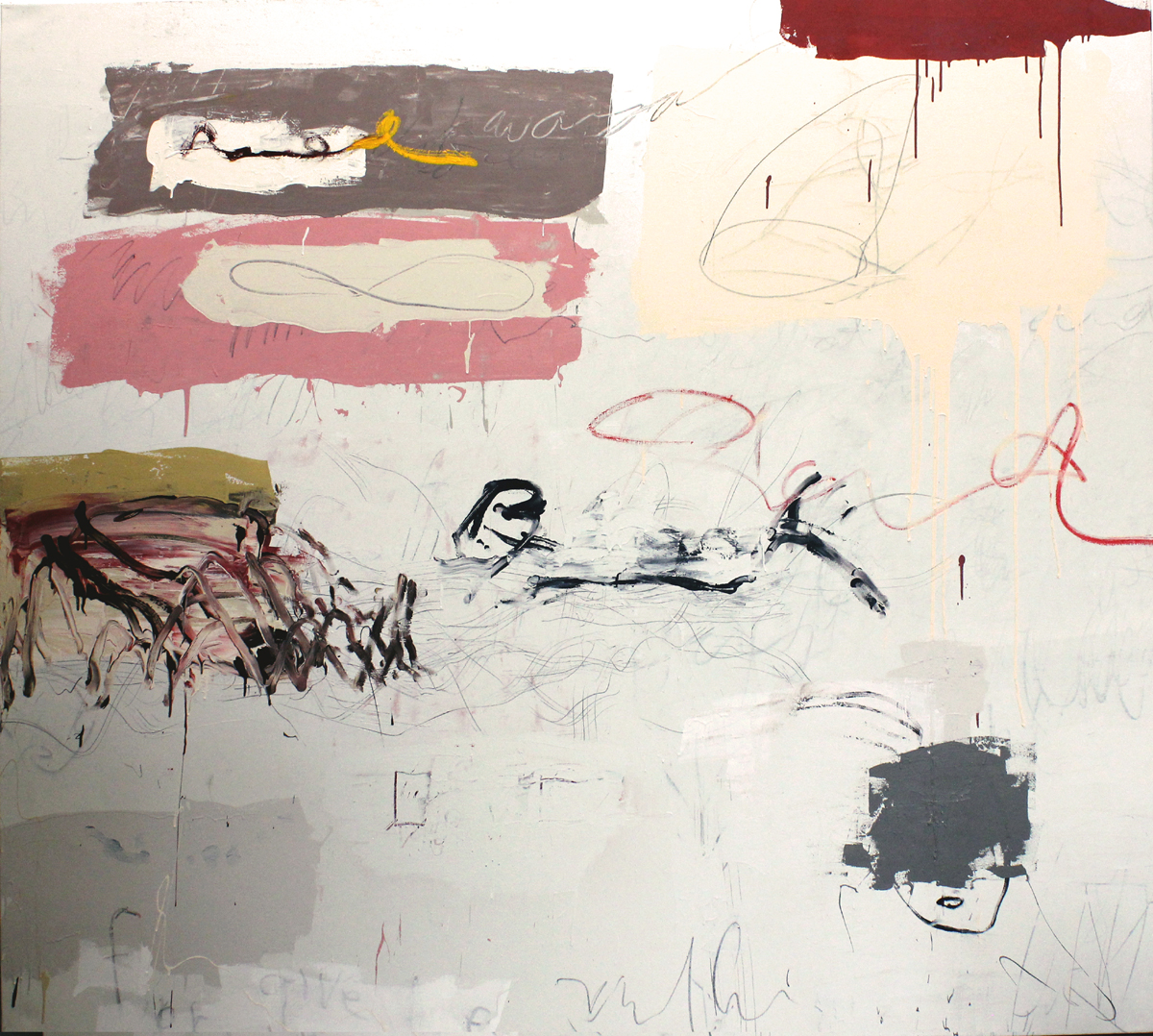
PETER FOLEY: A SURVEY OF THE ARTIST'S WORK,
1995-2017

By J. Lee, Feb. 15, 2017
Peter Foley's retrospective (1995-2017) exhibit, showing at the gallery from
February
10 to March 10, 2017 and consisting of fifty-six pieces, entices the viewer
with a mature and
masterful range of visual strategies, from small, vignette-like assemblages
mounted on
raised wooden panels and minimalist sketches executed with casual fluency to
large
abstract canvases exhibiting a triumphant gestural use of color. Perfectly
controlled drips
combine with effortless figurations, sometimes overlapping more subtle rectangular
compartments that bring to mind overhead views of labyrinths or ancient storage
yards.
On an intermediate level, several groups of medium-sized works have the color
and
texture of thick leather or wooden surfaces, in some cases given thick, glass-like
coatings.
With figurative or glyph-like markings, they suggest the weathered surfaces
of paintings and
other furnishings in Central American churches given over to syncretistic forms
of
Catholicism and anointed with the patina of centuries of smoke from candles
and burning
censers of copal.
A second medium-sized group, utilizing the spines and and other parts salvaged
from
old books, focus on vaguely erotic omphalus-like images from old engravings
and bear the
words "raw", "seduce", "void", "martyr", "porn", "sin",
and "pith". Rather than using typeface
in an ornamental or descriptive manner, these pieces leave the viewer to confront
the
noumenal substance behind the words.
A third grouping of smaller pieces employs rectilinear slats of wood or similar
materials of varying thicknesses. These are essentially bas-reliefs demonstrating
a
compositional skill free of obsessive formulas. It is in the larger pieces,
however, that the
artist fully transcends the strictures inherent in smaller designs. Not without
a hint of
traditional romanticism, these works provide the viewer with a well-expressed
sense of the
triumphant, the lyrical, even the elegiac; of a traveler's moment of arrival
in an ancient
harbor, with its sounds and smells of weathered marble, dark churches, sarcophagi
of
long-gone poets and monarchs, evanescent street food, dried fish, old barrels
of wine, the
shouts and whispers of humanity, exertion, sweat, the rush of traffic, and
the sea itself.